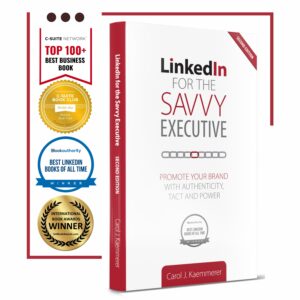
Layoffs at Your Company? Strategic Next Steps
I’m reading about job layoffs daily in the Minneapolis and St. Paul Metropolitan Area, both anticipated and accomplished. The news in your community is probably much the same.
I grieve to hear of employees with many years of dedication being let go – I am sad for their sense of betrayal, as their good work was toward a goal now deemed superfluous. I am saddened for those who remain and must pick up the workload of their laid-off colleagues while looking over their shoulders to discern where the axe will be wielded next. And I am sad for the companies: by jettisoning experienced leaders they rupture the culture of trust and lose access to institutional history and wisdom.
This news rekindles the pain of my job loss in 2011, as the company I had served as a consultant for 20 years downsized. But I’m writing to share that the new path you create for yourself may be more fulfilling than the job you are leaving behind.
Here are some takeaways from my journey and my current work helping executives through career transitions. Whether you have been shown the door or are one of the “lucky” ones who must now do more with less, I hope you’ll ponder my learnings.
1. The action taken by the company was not about you.
It’s about making the numbers come out better, or maybe boosting the company’s stock price. You just fit into a category of people slated for elimination. Job loss during an economic downturn is not shameful. It does not reflect your competence. There was nothing you could have done to save your position. (Likewise, if your position was spared, it doesn’t mean you are so much better than your colleagues whose positions were eliminated.)
It took me years to accept this, even though everyone in the department I served lost their position. When I finally came to terms with how unrealistic my thinking was, I could move forward again.
2. “I-am-my-job” is a myth.
You are so much more. This myth doesn’t consider the importance of our business principles or how we see ourselves as solvers of larger problems. It doesn’t consider the many non-job-related roles that are dear to us. Artificially equating who we are with our current position sets us up for depression if we lose our job, for whatever reason.
Make three lists:
- Things you will miss about your job,
- Things you are happy to be done with,
- Things you wished you could have done in your role but could not
Contemplating these lists may help you realize that your job was not as ideal as you might have once thought and that there is room for improving the fit between your interests and a new position.
3. Take some time to grieve.
Immediately after a job loss, your thinking is unclear. Take some time to be alone with your thoughts and heal. If the first words that come to mind when you talk with peers are filled with vitriol, no matter how justified, you are not ready for networking or working on your online brand or resume.
4. Treat yourself with kindness.
Eat healthfully, sleep well, and adopt a new exercise habit. Be patient with yourself. Wash your hands often. When you’re grieving, you’re more susceptible to illness.
5. Add value to others during your transition.
Step into a volunteer role during your transition. Make connections and introductions for others. Endorse colleagues for their key skills. Write them recommendations. Helping others will improve your mood and help in your time management.
6. You’ll need a stellar LinkedIn profile to attract your next position, especially if you are over 50.
Age discrimination is alive and well in the world of work. Your LinkedIn profile must be clear about your personal assets and the value you bring to your next position. Your brand should be easily grasped and memorable. Writing about yourself is hard under the best of circumstances. Seek some assistance from trusted friends and from professionals.
Check out my website for the assistance that is right for you. My online course and award-winning book, LinkedIn for the Savvy Executive: Promote Your Brand with Authenticity, Tact and Power, 2nd Ed. are affordable for all. Senior leaders can benefit from my one-on-one executive coaching and done-for-you profiles.
From Fortune 500 companies to Silicon Valley start-ups, clients around the country have passed initial muster, raised capital, and bought or sold what they wanted to buy or sell by using LinkedIn to their best advantage. If you are a C-suite executive or senior leader, I can make this easy for you. Before a customer or M&A team examines your team’s LinkedIn profiles, based on my knowledge of how LinkedIn works and how people respond to what they see there, I can ensure everything is ready and your profiles convey exactly the message and impression you’re aiming for.

Over the past ten years, I’ve helped countless C-level clients and senior executives use LinkedIn to frame conversations, impress suitors and customers, and introduce themselves before their first conversation takes place. Along the way, I wrote the award-winning book, LinkedIn for the Savvy Executive-2nd Edition. It’s received BookAuthority’s Best LinkedIn Books of All Time award, gold status in two categories from International Book Awards, and was named one of the Top 100+ Best Business Books by The C-Suite Network.

Let me help you use this essential business tool effectively. Do your due diligence through my website www.carolkaemmerer.com and profile www.linkedin.com/in/carolkaemmerer. Then, contact me here.
A member of National Speakers Association and certified as a Virtual Presenter, Carol is also an Advisor to the C-Suite Network.
- Unlocking Professional Potential: The Hidden Costs of a Neglected LinkedIn Profile - April 8, 2024
- Strategic Brand Differentiation: Navigating LinkedIn’s Latest Update for Leadership Category Supremacy - March 3, 2024
- Guarding Your Professional Reputation: How to Spot Fake LinkedIn Invitations - December 9, 2023






